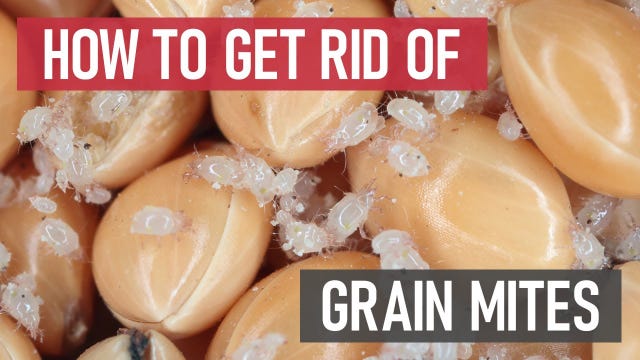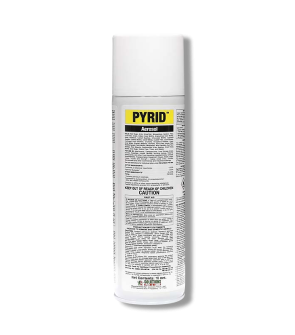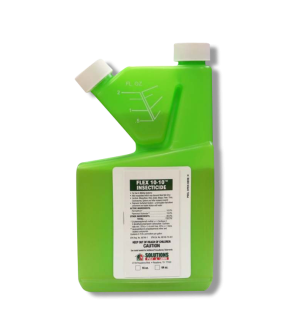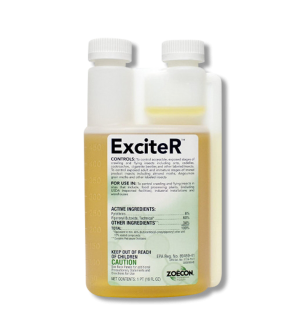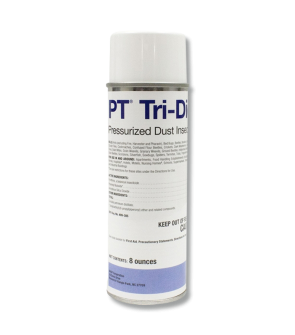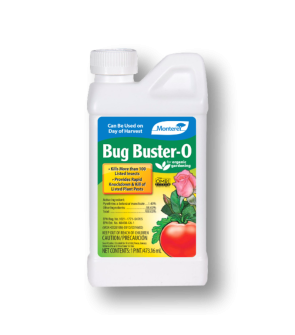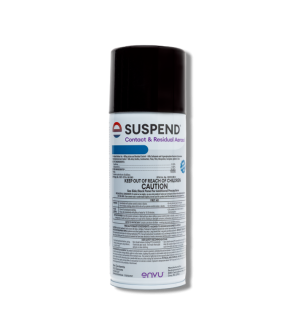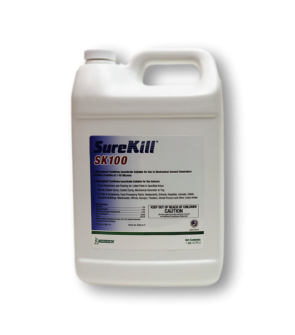Gain access to personalized product screening, the best pricing, rewards, and more!
Most Effective Products
Grain Mite Control: How to Get Rid of Grain Mites
This page is a general DIY guide on grain mite control. Using the products and methods suggested, you will get control of grain mites. Follow this guide and use the recommended products, and we guarantee 100% control over grain mites.
Grain mites, also known as flour mites, baker's itch mites, or cheese mites, may be tiny, but their impact on your food storage can be surprisingly big. These microscopic pests thrive in warm, humid environments and infest stored dry goods like flour, grains, and cereals.
While they don’t bite or spread diseases, grain mites contaminate food, reduce its quality, and can even trigger allergic reactions or skin irritation in some people. Because grain mites reproduce quickly in the right conditions, one unnoticed infestation can quickly become a full-blown pantry problem.
With the right combination of cleaning, targeted insecticide use, and smart food storage, grain mite infestations are completely preventable and controllable. With the following strategies and products, you can protect your food supply and keep your home grain mite-free.
Identification
Before treating grain mites, you must properly identify the pest and ensure you’re dealing with grain mites and not some other invader. Below, we'll describe some common characteristics that set grain mites apart from other pantry pest species. To see grain mites, you may need a microscope to examine them.

- Grain mites are very small pests, typically measuring between 0.013 to 0.017 inches long for the males and 0.014 to 0.026 inches long for the females.
- They are usually white, pale gray, tan, or yellow to reddish brown in color and have soft, oval-shaped bodies with eight legs, as they belong to the arachnid family. During their nymph stage, they will only have six legs.
- Grain mite eggs are tiny, measuring about 0.12 mm in length, and are oval in shape with a smooth, white surface.
Use the image and description above to help you correctly identify grain mites in your home. If you aren't completely sure, contact us, and one of our representatives will assist you with proper identification.
Inspection
Once you have confirmed that you are dealing with grain mites, you will need to inspect your property to pinpoint where the infestation is concentrated. During the inspection, you will focus on finding this problem "hotspots" where grain mites are commonly found.

Where To Inspect
Grain mites typically infest warm, humid environments where food is stored, especially if it's been kept for a long time or exposed to moisture.
Their primary targets are dry, starchy foods such as grains, flour, animal feed, cereals, birdseed, pet food, powdered milk, dry corn, rice, dried fruits, spices, processed cheese, and processed vegetables.
Common sites where these food items are stored are susceptible to infestations, like pantries, kitchens, basements, garages, grain bins, animal feeding areas, and other storage sites.
What To Look For
When present in large numbers, they may create a moist, brownish scum on surfaces due to their body fluids, especially in warm, humid environments.
One of the most common indicators is a fine, dusty coating on the surface of stored food items like flour, grains, or pet food. This dust may consist of live mites, shed skins, and waste.
Infested products may also clump together or develop a moist, caked texture, particularly in humid conditions.
A distinct musty or minty odor may be present, signaling heavy infestation.
Some people may develop itching, redness, or mild rashes after handling heavily infested food or surfaces, due to contact with mite bodies, shed skins, or allergens they produce. This condition is sometimes referred to as "grocer's itch", especially among people who handle infested grains regularly.
Treatment
Before beginning with a treatment approach, be sure to wear the proper personal protective equipment (PPE) when handling any type of pesticide material.
To get rid of grain mites, you need to eliminate the source, clean thoroughly, and apply the appropriate insecticides.
Step 1: Thoroughly Clean and Vacuum
 The first and most important step is to locate and dispose of any infested food items.
The first and most important step is to locate and dispose of any infested food items.
Seal infested products in a plastic bag before disposing of them to prevent spreading mites during cleanup. Throw away any boxed and bagged items, them remove everything else from your shelves.
Avoid transferring food to another container, as this can spread mites further.
After removing all food items, vacuum shelves, corners, and floor edges where food particles or mites may have settled.
Follow up by wiping all surfaces with a rag soaked in hot water to clean up any residue.
Pay special attention to cracks, seams, and shelf joints where mites may hide. Let the area dry completely, as moisture promotes mite survival and reproduction.
Step 2: Use Pyrid Insecticide Aerosol

Pyrid Insecticide Aerosol is a ready-to-use, contact insecticide spray designed for quick knockdown and kill of flying and crawling insects, including grain mites. It acts on contact and is often used in residential, commercial, and food-handling areas due to its rapid action.
Spray along shelf edges, inside corners, and behind joints where mites may hide, but only when all food is removed.
Do not spray directly onto shelves where food will be placed.
To make a crack and crevice treatment against light grain mite infestations, move the injector tip along the cracks while spraying at the rate of 3 feet per second.
For heavier infestations as a crack and crevice treatment, spray at the rate of 1 feet per second.
Apply the product for at least 1 second.
Allow the treatment area to ventilate thoroughly for at least 15 minutes or more before returning food to the space. Wipe surfaces down after treatment if food contact is likely.
Step 3: Apply Flex 10-10

Flex 10-10 is a dual-active synthetic insecticide commonly used to control pests like grain mites. It contains permethrin and piperonyl butoxide, which work together to target the nervous system of pests in different ways. This combination makes it highly effective against grain mites by providing rapid knockdown and lasting residual control, helping to prevent reinfestation.
Apply it as a residual spray into cracks, crevices, and baseboards using a low-pressure sprayer.
Under normal conditions, dilute 3.2 fluid ounces of Flex 10-10 per gallon of spray dilution (1:39). This means you would mix one part concentrate to 39 parts water.
For severe infestations, use 6.4 fl oz per gallon (1:19). You would mix one part concentrate with 19 parts water.
Use a handheld pump sprayer adjusted to deliver a coarse wet spray.
Direct the spray into hiding places, cracks and crevices, under pallets, around containers of stored foods, around the base of machinery, and behind shelves and drawers.
Apply around windows and doors as well as other places where these insects may enter the premises. Also treat storage areas, baseboards, and other locations where these insects might hide.
Avoid spraying into machinery openings or electrical equipment.
Do not use Flex 10-10 in or near food preparation or storage areas, including pantries or kitchen cabinets.
Prevention
After successfully eliminating grain mites from your property, you will want to ensure these pests do not return. Here are some preventative measures we suggest following to keep grain mites away.
- Preventing grain mites is all about creating an environment where they can’t thrive and keeping your stored food safe. First, store dry goods in airtight containers made of thick plastic with tight-fitted lids to block mites from getting in. Avoid keeping food in paper bags or cardboard boxes that mites can easily penetrate.
- Keep storage areas and sites where you keep food cool and dry, since grain mites love warmth and humidity. So, maintaining a relative humidity below 50% and good ventilation helps a lot. Using a dehumidifier in damp pantries or basements is also a smart move.
- Practice good sanitation by regularly cleaning shelves, cupboards, and storage containers to remove spilled food or crumbs that attract mites.
- Inspect new food purchases carefully before storing and when buying dry goods.
- If pest activity occurs, Pyrid can be sprayed on demand to control pests quickly. You can reapply Flex 10-10 once a month for continous control in nonfood areas adjacent to your food storage rooms, such as garages, utility rooms, or basements. By treating these spaces with Flex 10-10, you create a protective barrier that helps reduce grain mite populations before they can migrate into food storage areas. However, it’s important to remember that Flex 10-10 should never be applied directly in pantries or on food-contact surfaces.
Key Takeaways
What Are Grain Mites?
- Grain mites are tiny pests that infest stored dry foods like grains and flour, thriving in warm, humid conditions. They can contaminate food and cause allergic reactions, but do not bite or spread disease.
How to Get Rid of Grain Mites
- To get rid of grain mites, clean and remove infested food, then treat pantry cracks with Pyrid Insecticide Aerosol for safe food-area control. Use Flex 10-10 spray only in nearby nonfood areas like garages or utility rooms to reduce mite populations outside the pantry.
Preventing Grain Mite Reinfestations
- Prevent grain mites by storing dry foods in airtight containers and keeping storage areas cool and dry to reduce humidity. Apply Flex 10-10 in nonfood areas like basements or garages to create a barrier that helps stop mites from migrating into food storage spaces.






